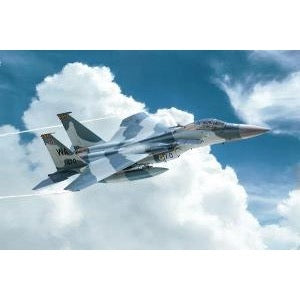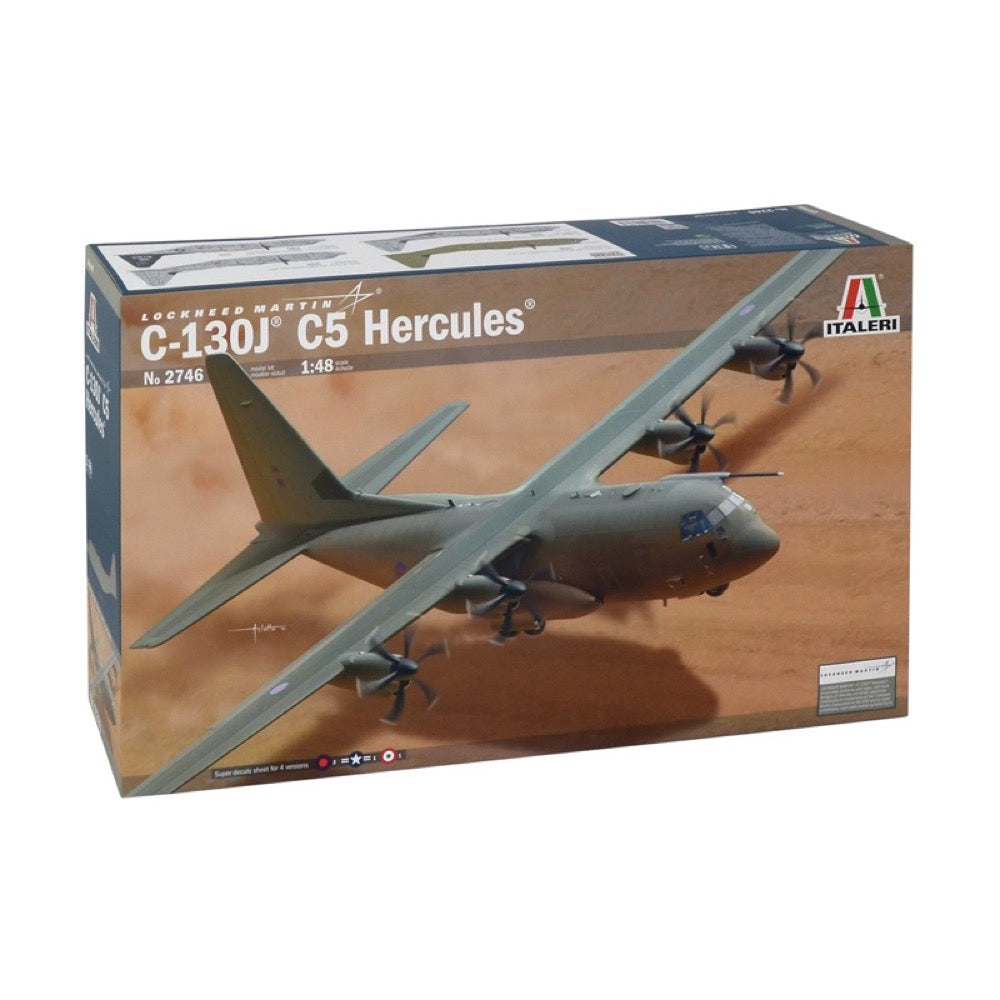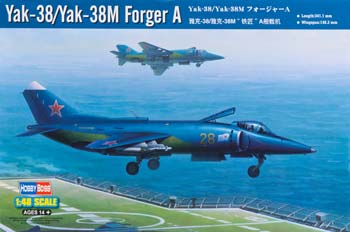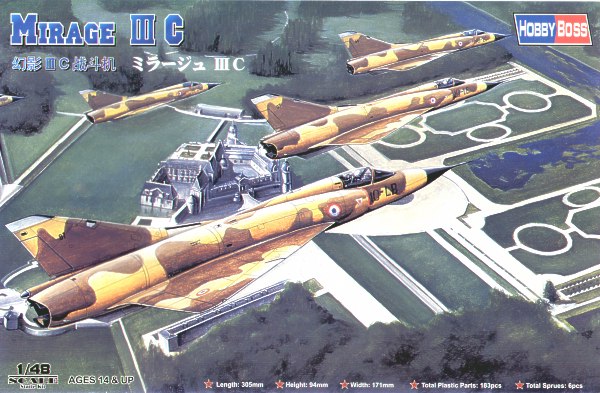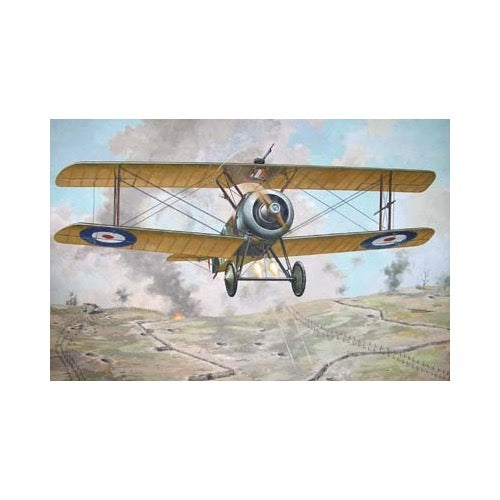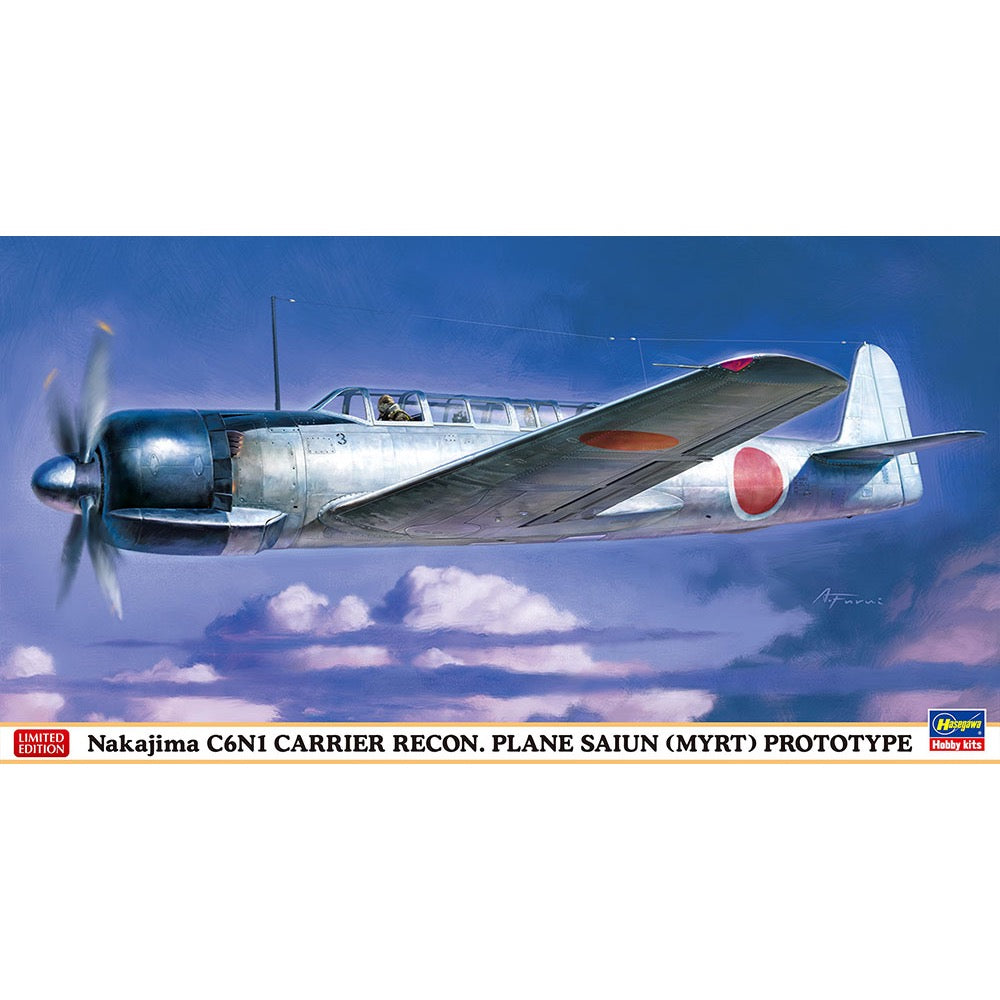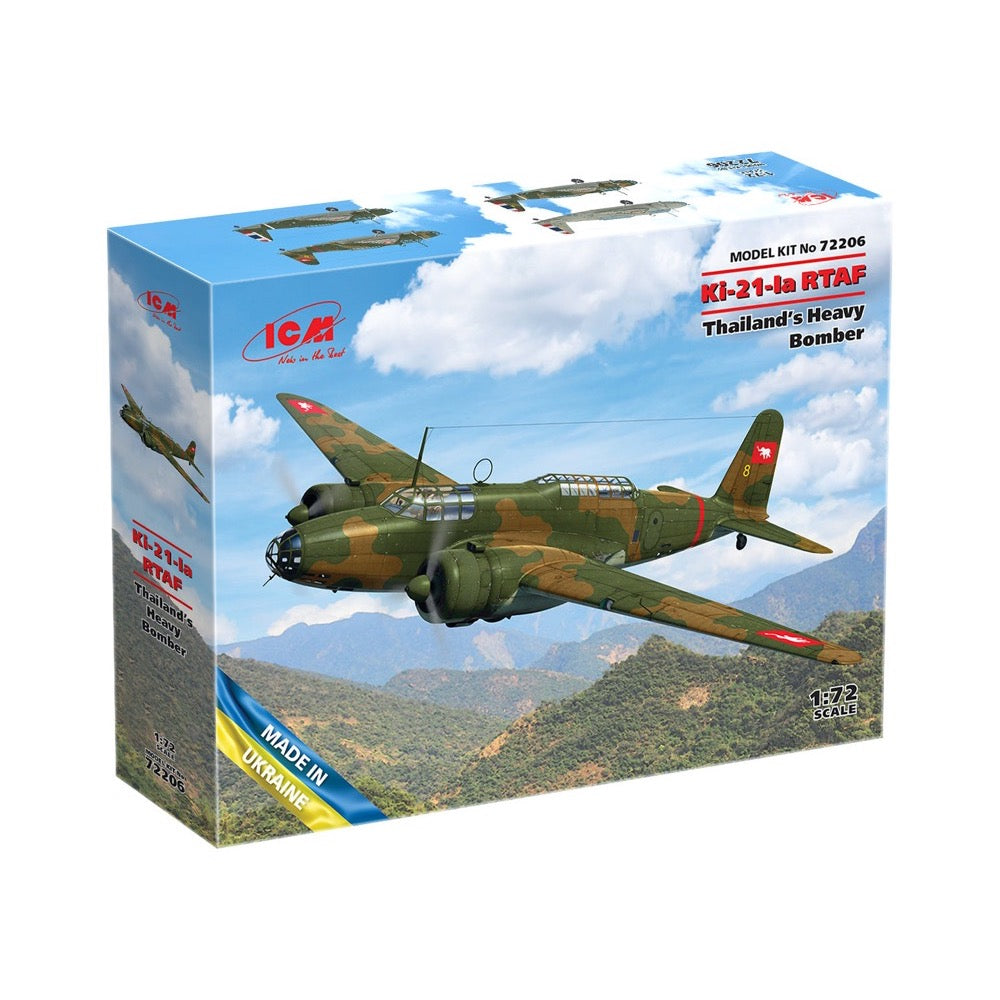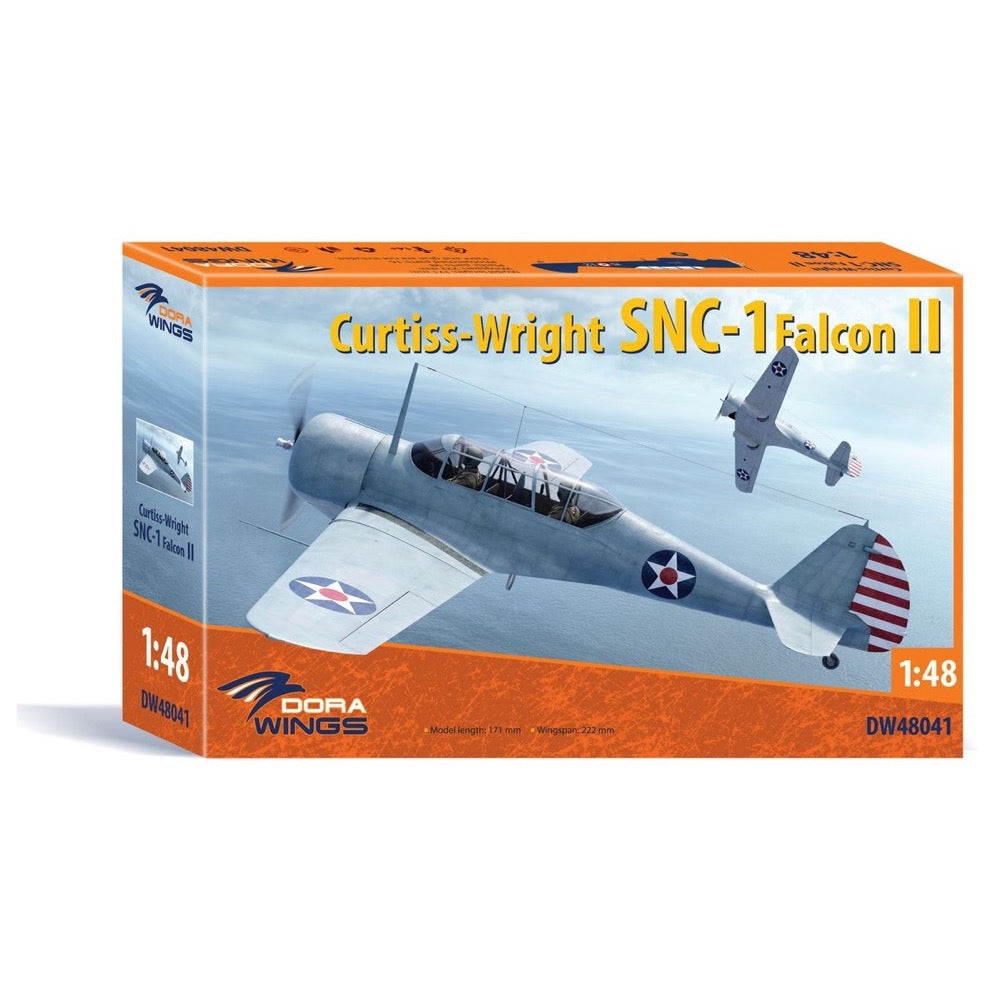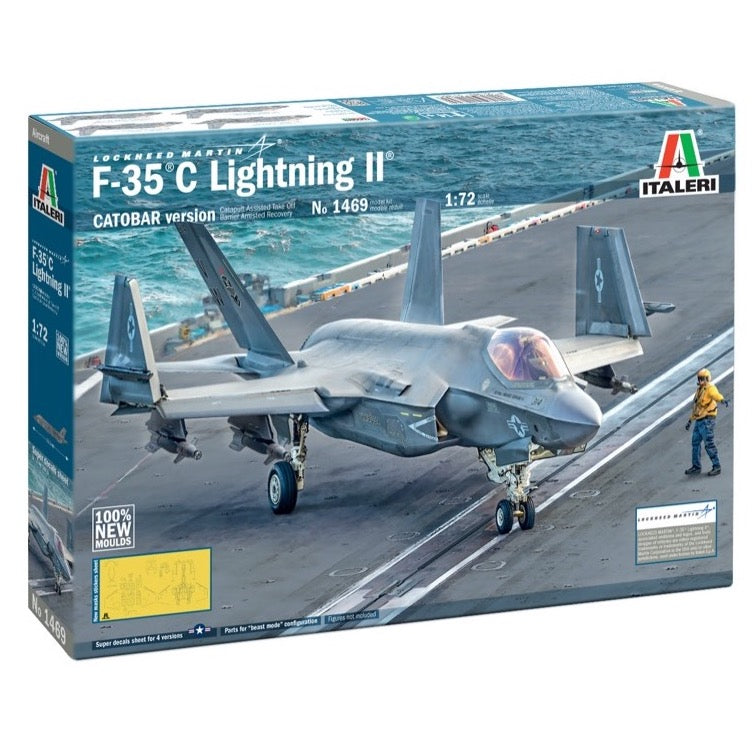
Italeri 1469 1/72 F-35C Lightning II
25.00
$
<p>The JSF (Joint Strike Fighter) program was established to develop a new fifth-generation, all-weather, multi-role fighter capable of serving as a viable replacement for ground attack aircraft of the United States and NATO countries. From this project emerged the single-seat Lockheed Martin F-35 Lightning II aircraft. Equipped with extraordinary technology, it is characterized by the adoption of an aerodynamic layout, featuring stealth capabilities and a trapezoidal wing design.Designed to perform missions of air superiority, close air support, and ground attack, its airframe can be configured in various setups. The F-35A operates from conventional runways, the F-35B is designed for vertical take-off and landing, and the F-35C is ideal for deployment from conventional aircraft carriers. More specifically, the F-35C is distinguished by its folding wingtips to optimize onboard storage operations, a rear arrestor hook, and a reinforced frontal gear suitable for catapult launch systems on U.S. Navy aircraft carriers.</p>
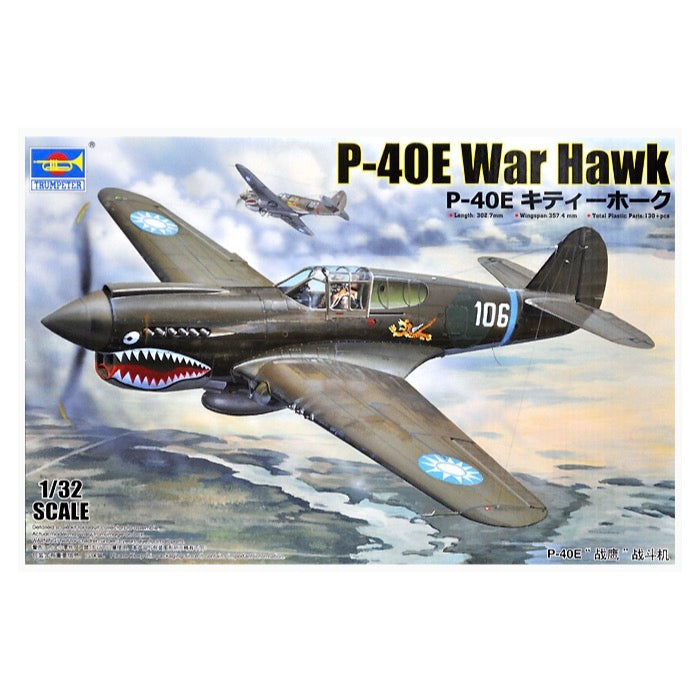
Trumpeter 02269 1/32 P-40E War Hawk
46.00
$
<p>The Curtiss P-40 Warhawk is an American single-engined, single-seat, all-metal fighter and ground-attack aircraft that first flew in 1938. A derivative of the P-36 Hawk, the P-40 held the line early in World War 2 and fought in every theatre, giving sterling service to the United States Army Air Corps, the RAF, and many Allied air forces, including the RAAF.</p>
<h3>Features</h3>
<ul>
<li>Detailed fuselage and wing w/ accurate design</li>
<li>Finely detailed cockpit, gear cabin</li>
<li>Rubber tires</li>
<li>PE parts included</li>
</ul>
<p>High quality, precision plastic model kit. Paint and glue not included. Requires assembly and painting. For intermediate to advanced skill modellers.</p>
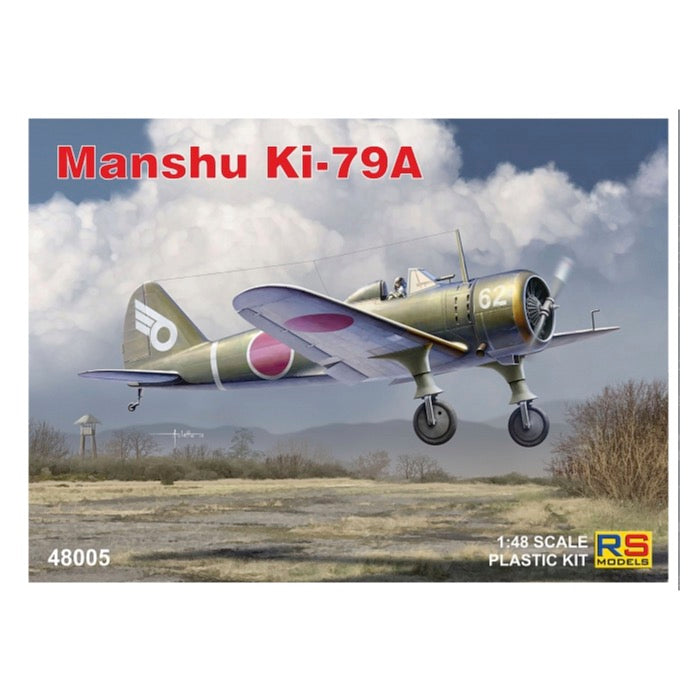
RS Models 48005 1/48 Manshu Ki-79 A
33.00
$
<p>The Nakajima Hikoki KK factory in Japan discontinued production of the Ki-27 fighter aircraft because it began production of the more modern and powerful Nakajima Ki-43-I. However, there was interest in the production of these simpler aircraft in Manchuria, so the Nakajima factory supplied production jigs for the Ki-27 to Manshu HikÌ_ki SeizÌ_ KK in Charbin. There, production continued and gave another 1,379 aircraft. Manshu proceeded with the further development of this type, and so a training aircraft appears, on which pilots could train and switch to the combat type without having to change the habits they acquired during training. Because the training aircraft required an overpowered engine, a weaker power unit was installed and the cockpit was now open. The installation of a smaller and lighter engine shifted the center of gravity of the aircraft backwards, so it was necessary to extend the front of the fuselage by 200 mm. The volume of the fuel tanks was reduced because the new engine had lower fuel consumption. The aerodynamic bonnets were launched and there was a fixed spur wheel at the end of the fuselage.</p>
<p>In 1942, the Rikugun Koku Hombu adopted this type into the state under the designation: "continuing training aircraft type 2".</p>
<p>The Manshu factory supplied two versions: the Ki-79a K in a single-seater version, powered by an air-cooled nine-cylinder Hitachi Ha-13a 1 cylinder with a take-off power of 515 horsepower. The two-seater version differed in the installed seats in a row and was designated Ki-79b Otsu. The single-seat Ki-79a was armed with a single machine gun Type 89 caliber 7.7 mm.</p>


